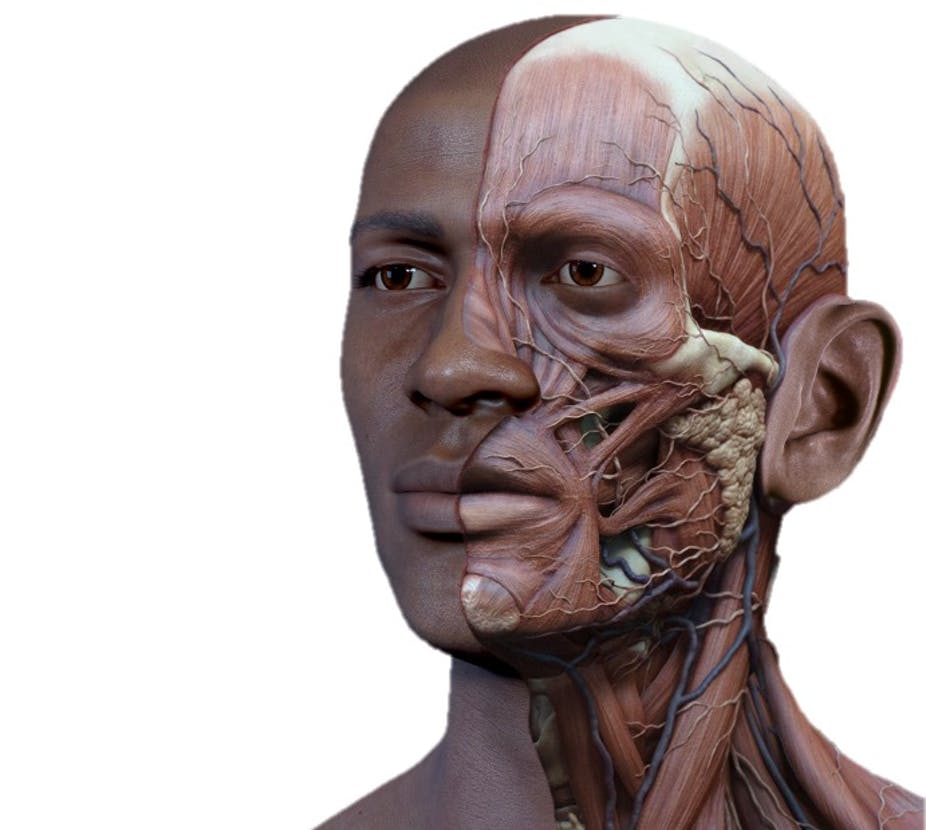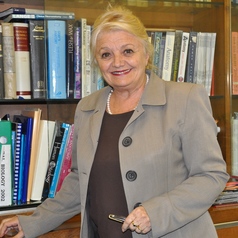The study of anatomy has been the foundation for the training of students in medical and allied health sciences – dentistry, physiotherapy, occupational therapy, pharmacy, nursing and medical science – for hundreds of years. To most teachers of human structural anatomy, knowledge of this complex subject is inseparably linked to dissection of the human body. Dissection remains a fundamental aspect of anatomy and is considered to be the “gold standard” for teaching human anatomy in many parts of the world.
The reason for this is that cadaver-based teaching prepares students intellectually and emotionally to deal with the challenges they will face in their health sciences careers.
The dissection of the human cadaver guides students in understanding the intricate three-dimensional relationships of the structures underlying the skin. This is important for a number of reasons. For example, it’s vital for doctors performing a clinical examination of a patient, and for a dentist in knowing where to inject or make surgical incisions during procedures in the mouth.
Dissection also allows students to understand the differences between the normal and the abnormal, such as congenital abnormalities or pathologies.
In addition, it’s vital for surgeons. This is because each living person is unique. The variability of structures in the human body seen during dissection prepares surgeons-to-be for any eventuality during surgery. Similarly, knowledge gained from dissection of the body aids radiologists with interpreting shapes and shadows of structures they notice in the scans and images they scrutinise to arrive at a diagnosis.
The importance of dissection has been stressed in relation to other essential learned abilities too. For example, exposure to dissection introduces the health professional student to death. It also provides moral and ethical training, as well as a humanistic approach to patient care.
Given the importance of dissection, acquiring bodies for teaching and basic research is crucial. But what ethical codes should apply? What rules should be followed?
Early history
The early history of the acquisition of cadavers causes discomfort for most anatomists. This is because it includes accounts of body snatching, grave robbing and other immoral and unethical means of acquiring bodies.
In the past in South African medical schools, human cadavers were often derived from unclaimed bodies. This is still legal under the National Health Act. But, with the change in social beliefs in the 20th century, many departments of anatomy around the world initiated body donation programmes. This includes South Africa.
These programmes embraced the religious and cultural beliefs of the communities in which they were based, and are specifically designed to encourage informed consent. This means that the donor should have full knowledge of how their remains will be used for teaching and research. With this knowledge, a person can make an informed decision as to whether or not they will consider donating their remains.
In addition, anatomy departments have been provided with guidelines for the ethical acquisition of cadavers. These guidelines have been drawn up by professional anatomical societies such as the International Federation of Associations of Anatomists and the Trans European Pedagogic Research Group.
Major changes
The guidelines, plus a strong commitment to an ethical approach, have led to major changes in the way the School of Anatomical Sciences at the University of the Witwatersrand acquires cadavers.
The school’s population of cadavers has been transformed from an almost totally unclaimed collection to one which consists purely of bequeathed and donated individuals.
However, there is a need to encourage diversity in the cadaver population to ensure it represents the country’s rich variety in population affinity, age and sex. This can only be achieved by informing communities throughout the country of the importance of body donor programmes.
This requires gaining trust which can only be done through ethical practice. The central message is that the bequest of one’s body after death is an altruistic gift.
South Africa isn’t the only country addressing the ethics of its cadaver population. Every year the International Federation of Associations of Anatomists raises awareness about the continuing challenges on World Anatomy Day. This date commemorates the day on which Vesalius, the “father of anatomy”, died in 1564. To mark the day, international departments and schools of anatomy, such as ours, celebrate the generosity of the selfless donors who have contributed to the training of many health professionals.



 Could ADHD drugs reduce the risk of early death? Unpacking the findings from a new Swedish study
Could ADHD drugs reduce the risk of early death? Unpacking the findings from a new Swedish study  The Atlantic diet: how it compares to its Mediterranean counterpart – and what benefits it might have
The Atlantic diet: how it compares to its Mediterranean counterpart – and what benefits it might have  Surgery won’t fix my chronic back pain, so what will?
Surgery won’t fix my chronic back pain, so what will?  General practice is in crisis in the UK – and it’s failing the people who need it most
General practice is in crisis in the UK – and it’s failing the people who need it most  Eating some chocolate really might be good for you – here’s what the research says
Eating some chocolate really might be good for you – here’s what the research says  What your sad desk sandwich says about your working habits
What your sad desk sandwich says about your working habits  An Israeli attack on Iran’s nuclear weapons programme is unlikely – here’s why
An Israeli attack on Iran’s nuclear weapons programme is unlikely – here’s why  EU enlargement: What does the future hold?
EU enlargement: What does the future hold?  Video games at work? It sounds fun, but there are ethical risks
Video games at work? It sounds fun, but there are ethical risks  Child health is in crisis in the UK – here’s what needs to change
Child health is in crisis in the UK – here’s what needs to change  The rising flood of space junk is a risk to us on Earth – and governments are on the hook
The rising flood of space junk is a risk to us on Earth – and governments are on the hook 

































